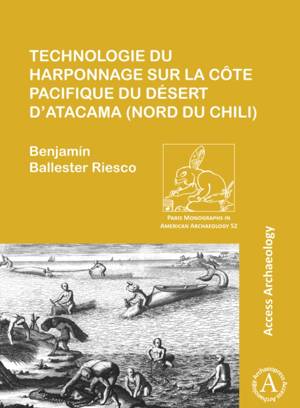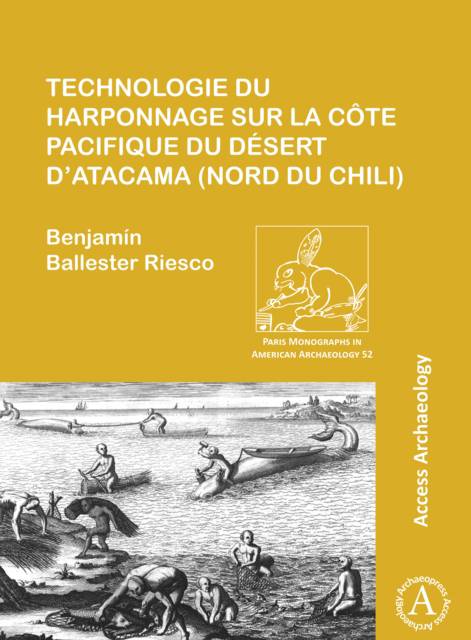
- Retrait gratuit dans votre magasin Club
- 7.000.000 titres dans notre catalogue
- Payer en toute sécurité
- Toujours un magasin près de chez vous
- Retrait gratuit dans votre magasin Club
- 7.000.0000 titres dans notre catalogue
- Payer en toute sécurité
- Toujours un magasin près de chez vous
Technologie Du Harponnage Sur La Cote Pacifique Du Desert d'Atacama (Nord Du Chili)
Benjamin Ballester Riesco
76,45 €
+ 152 points
Description
These objects do not have a single purpose. This is the central premise that guides the research within this book. Throughout the volume the reader will follow a representation of a marine hunter-gatherer society, a projection deriving from one of its iconic and most important material assets, the harpoon. This very technical object will be studied not only for its most evident function - hunting at sea - and the work delves into the structural, symbolic, technological and world-building aspects of the human societies that used them. To achieve this goal the text begins with a judgment about the role of marine hunting, its prey, and the agents involved in different coastal societies on the American continent, in order to create a comprehensive framework of reference for the subject. It continues by focussing on clarifying, defining and discussing the concept of harponage from technology compared with other historical and ethnographic cases of marine hunters across the globe. A typology of harpoon points from the Atacama Desert is presented, with classification based on their technical attributes, constituent units, composition features and articulation mechanisms, in order to evaluate the chronological scope and geographical distribution of each one of the types of harpoon heads from the last 7000 years of coastal history. The text then explores the multiple values and meanings of the harpoons of the Atacama Desert. The book finally examines the social reasons that influenced the development of an incredibly sophisticated and complex technology of marine hunting. Inferences that take it out of the sea and away from hunting, towards hypotheses that seek answers in the cultural determinism stemming from technical decisions, to utilise technology as another mechanism to establish and strengthen social bonds in the construction of worlds between different agents and collectives, and no longer as a simple tool to satisfy subsistence needs.
Spécifications
Parties prenantes
- Auteur(s) :
- Editeur:
Contenu
- Nombre de pages :
- 78
- Langue:
- Français
- Collection :
Caractéristiques
- EAN:
- 9781789690279
- Date de parution :
- 09-11-18
- Format:
- Livre broché
- Format numérique:
- Trade paperback (VS)
- Dimensions :
- 203 mm x 277 mm
- Poids :
- 280 g

Les avis
Nous publions uniquement les avis qui respectent les conditions requises. Consultez nos conditions pour les avis.






